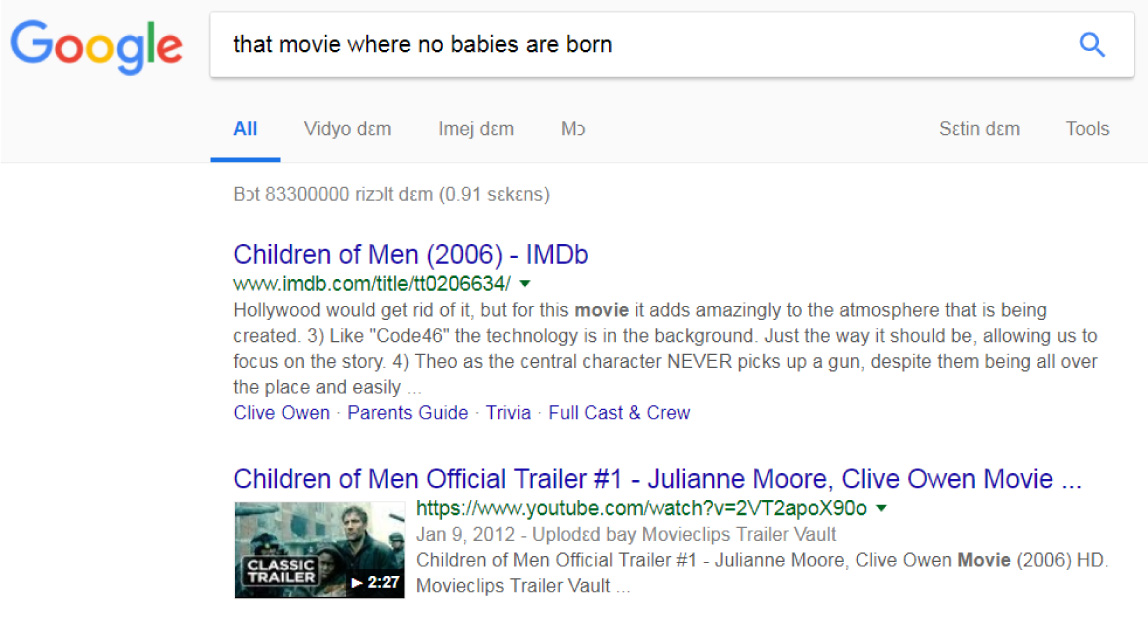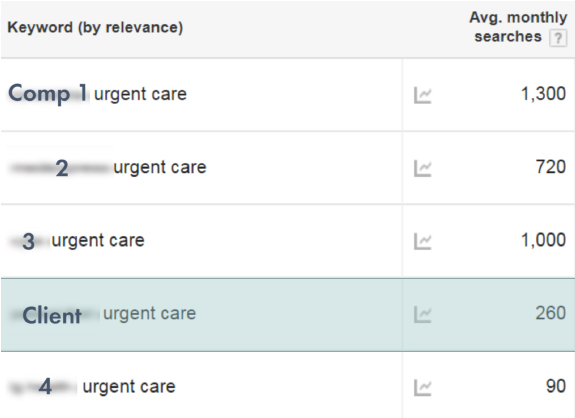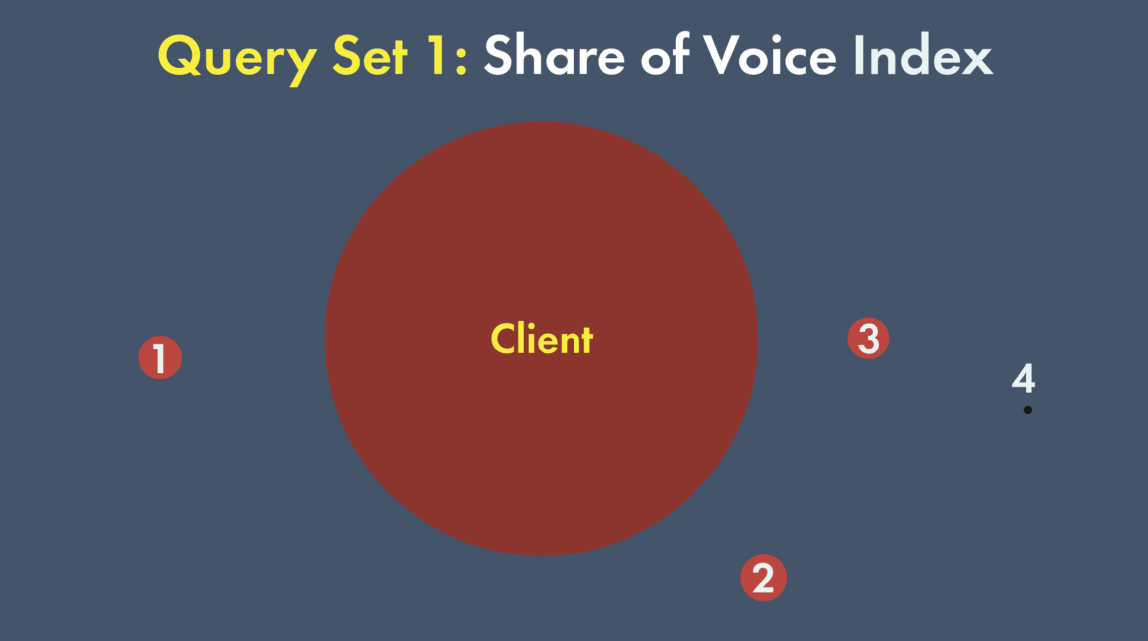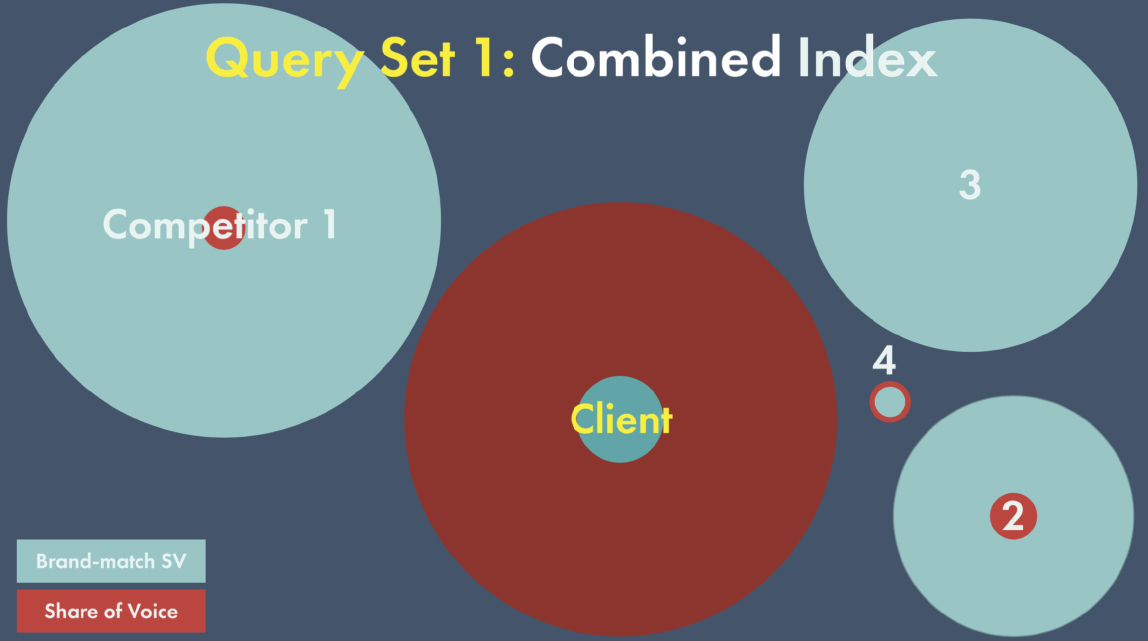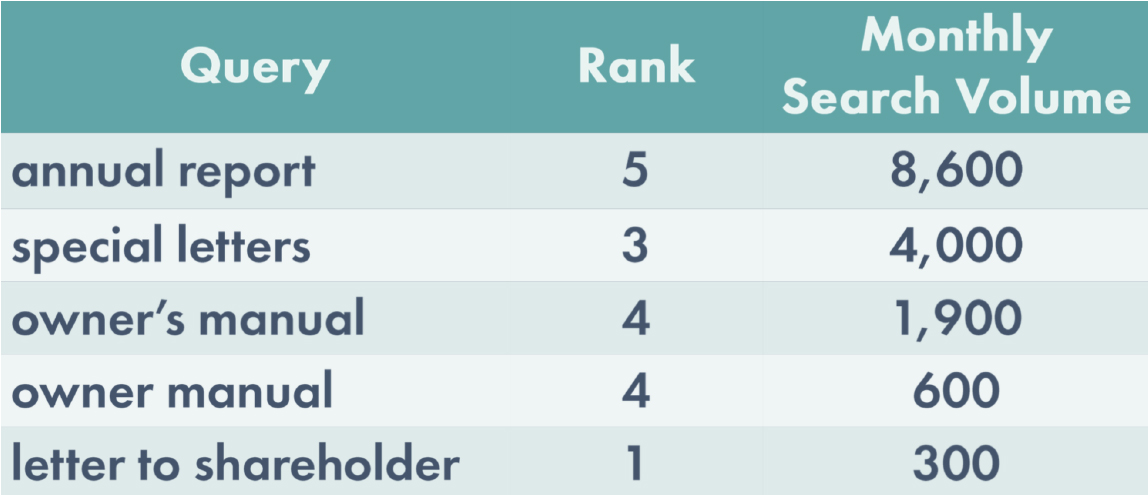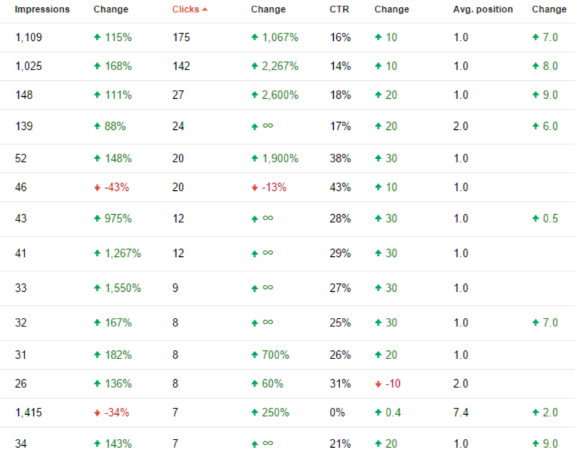Remember when SEO opportunities conflicted with brand guidelines? Not anymore.
Derek Gleason once viewed building brand equity as an adversary. For him, branding tactics favoured by clients, such as design, tone, and UX, stood in the way of tried and true SEO efforts that he knew would deliver results.
Now? After years of working alongside top brands at Workshop Digital, Derek’s perspective has shifted entirely from “SEO vs. brand” to that of “SEO for brand”.
We asked Derek to divulge his wisdom on brand equity after presenting at City Crawl Manchester. Below, he reveals how these two efforts can set aside their differences and play nicely in the same sandbox to help effectively strengthen brand entity connections for search engines. You’ll learn:
- What brand means to search engines.
- How to measure brand equity.
- How to increase brand equity.
So, keep your hands and arms inside the vehicle: Derek’s about to take you on a tour de brand entity in his guest post.
What brand means to search engines
Google has a long-standing interest in using brand equity to improve search results.
In fact, we can trace Google’s interest back to the original PageRank paper from 1998, which noted that Google’s link graph can help assign “a global ‘importance’ ranking of every web page,” hinting at the idea of brand equity.
The authors become more explicit about this connection further on, highlighting how PageRank reflects “a collaborative notion of authority or trust,” two words we closely associate with brand values.
While relevance remained explicit in the early years, over time, search-engine improvements reduced the need for tight connections between query and content. Implicit connections became sufficient in the era of semantic search, which allowed search engines to return relevant results without a word-for-word match between keyword and content.
Semantic search relies heavily on entities
For instance, the query “that movie where no babies are born” returns results about the film, “Children of Men.”
Semantic search relies heavily on entities, which are simply a topic — a person, place, or thing — that search engines connect to first. Once search engines identify the corpus of documents relevant for that entity, they use keywords in the query to deliver the most relevant results from that document set.
So, “brand” is not a separate signal in search — it’s simply one type of entity signal. One that can be measured and strengthened.
Three ways to measure brand equity
Brand can be a reason to click one link instead of another. This is passive brand equity: A searcher sees a result that ranks third or fourth but clicks it anyway because the company or domain is familiar.
What we want to do, however, is make brand equity a reason that Google ranks one link instead of another. And getting there starts with good measurement.
1. Identify brand-query sitelinks
Google generates sitelinks algorithmically based on the pages they deem “relevant for the user’s query.” Limiting the query set to brand queries, we can then identify brand-query sitelinks — the pages that Google most closely associates with a brand.
We can do this by filtering data in Google Search Console.
First, filter queries to include only your brand. If we limit the query set to brand queries, we can then identify the sitelinks for brand queries, or brand query sitelinks — the pages that Google most closely associated with a brand. In Google Search Console, you can do this by choosing “Query is exactly” if your brand is a tidy word or phrase, or “Queries containing” if your brand has several variations, frequent misspellings, or an occasional geographic modifier.
Next, filter pages’ average ranking by “Smaller than” 1.6. The result is a snapshot of pages that show up most often as sitelinks for brand queries.
This gives us a detailed look at the most common brand-query sitelinks. We can use this same method to show the impact of SEO efforts. Compare impressions over any two time periods and sort by the highest to lowest “difference.” This shows where you’re building brand-equity in search and can pinpoint strong connections as well as opportunities to improve rankings.
The impact of SEO efforts
We can gauge the impact of, say, increased internal links or an expansion of on-page copy.
We can also use this report to identify any potential areas of concern by flipping the “Difference” chart to see where, exactly, brand-entity connections may be fading and the risks that may pose for the brand.
Brand-query sitelinks also identify the de-facto homepages of a site. Users that perform brand queries are, obviously, high-value prospects — they’re searchers who are familiar with a company’s offerings and are much closer to conversion than, say, the average site visitor.
By looking at non-homepage clicks and click-through-rate, we can see interior pages where brand-query users arrive on your site. Even if the total number of users is small, you may want to make changes, such as on a blog or team page.
Brand query sitelink data also helps to justify the addition of introductory text to a page to reinforce a site’s authority. And it provides internal links that move brand-query users to other relevant pages.
2. Compare brand-match query data
Brand-match query data (brand + keyword) brings offline brand equity online. When a searcher has a pre-existing brand preference (e.g. “Nike”), they take that information out of their head and move it online when they type it and their keyword (e.g. “running shoes”) into a search box (e.g. “Nike running shoes”).
At a tactical level, we can use Google Keyword Planner to assess brand-match query volume for a client and competitors to help measure brand signals in search. In the example below, we compare a client to four competitors for the query “[brand] + urgent care”.
Brand equity built via brand-match queries
We can see that the client is lagging behind three of four competitors.
This data is for a single query and a single state (Pennsylvania) — most brands have multiple keyword sets and geographic targets. A graphical representation with circles of relative sizes can make this data easier to interpret.
Visualizing brand equity
A graphical representation can help preserve its business value as it moves through an organization.
At the outset of a relationship, this analysis can help set client expectations: Lagging behind in brand-match query volume may increase the amount of time and effort necessary to improve rankings for non-branded terms.
We can take this simple analysis a step further by folding in non-branded share of voice data from STAT. We track non-branded versions of this query for every city in which the client and competitors operate.
The resulting share of voice data shows (surprisingly) that the client vastly outperforms competitors despite having fewer brand-match queries.
Share of voice surprise
Where the client may lag behind in brand-match query volume, they make up for in share of voice.
Below, the share of voice data has been layered over the initial chart to illustrate the “over-performance” — any instance of a red circle overlapping light blue reveals a site where SEO outperforms brand; the inverse is true as well.
All together now
Brand and SEO combined shows us where SEO is outperforming brand for a site, and vice versa.
3. Compare brand-match anchor text data
We can run a similar analysis with brand-match anchor text, which shows how brand equity moves around online. Like brand-match queries, brand-match anchor text is “brand + keyword.”
Brand-match anchor text builds a similar connection to brand-match query data but embeds it in links, the original signal of trust and authority on the web.
To help prove this point, let’s take a look at Berkshire Hathaway, which makes $220 billion per year and is the second-largest U.S. company. (You may know them better for their founder, Warren Buffett.) Yet, in 2018, this is what their website looks like:
Berkshire Hathaway’s site
It’s virtually unchanged from how it appeared twenty years earlier.
The site is still plain HTML with inline styles. It’s not mobile friendly. It’s not secure. There’s no Adobe or Google Analytics setup. The www and non-www versions both return 200 status codes. In short, it’s not optimized for anything.
And yet it ranks quite well for a number of head terms with decent search volume.
The numbers don't lie
Berkshire Hathaway is doing pretty good for a site that isn’t optimized in the slightest.
For instance, some queries, such as “owner’s manual,” are only vaguely related to their business: A single page about company values mentions the term just twice. Yet, Berkshire Hathaway appears near the top of a SERP that should probably be dominated by automotive manufacturers.
After digging through every element, the only answer I could find was brand-match anchor text — hundreds or thousands of brand-match anchors that connect Berkshire Hathaway to non-branded queries, such as “letter to Berkshire Hathaway shareholders,” which yielded 1,302 referring domains. Others included: “Berkshire Hathaway annual report” (379 referring domains) and “Berkshire Hathaway owner’s manual” (55 referring domains).
At a tactical level, we can compare brand equity built through brand-match anchor text to non-branded share of voice data. When it came to our urgent care client, their competitors’ brand equity dramatically outpaced their own:
Comparing brand equity built through brand-match anchor text to non-branded SOV data
In this instance, we see that competitors’ brand equity outpaces that of our client even more dramatically.
What does this all mean? If you’re a competitor whose brand equity vastly outpaces organic performance, it’s time for a bigger (or smarter) SEO investment.
Conversely, if you’re the client, you must recognize your vulnerability: If competitors get their SEO houses in order, your share of voice may shrink due to their outsized advantage in brand equity.
How to increase brand equity
There are two main ways to increase brand equity: hard-coding and soft-coding. Both can help you earn more brand-match queries and anchor text.
Hardcode your brand for search
The best way to hard code your brand for search is through Wikipedia, which maps entities.
A 2016 paper by Googlers in charge of migrating Freebase to Wikidata offers insight into how Google uses these sources, the authors noting that “Wikipedia is often used as a benchmark for entity mapping systems.”
One aspect of this process is Wikipedia’s useful ability to detect and disambiguate named entities. Disambiguation helps detect searcher intent from vague queries. (For the query “rose,” do you mean the flower or the wine?) And typically, in Wikipedia, “the title is the most common name for the entity described in the article.”
Several years ago, a client had earned a Wikipedia page by virtue of owning a skyscraper in a major city. At one point, however, the name of the building and the domain changed, breaking apart the entity connection. A 30-second update of that data in Wikipedia had dramatic results — three- and four-digit improvements for brand queries.
Google uses Wikipedia as an organic, human algorithm
These improvements didn’t come from an increased number of brand searches — they resulted from Wikipedia’s ability to help Google disambiguate brand queries from similar, but irrelevant, ones.
The brand entity built through Wikipedia helped Google understand when to show the client (e.g. someone running a brand query in the same city as the building) and when not to show the client. (The declines above represent irrelevant queries for which the client site was previously shown.)
Google has outsourced management of its knowledge graph to Wikidata because Wikidata’s vast stable of human editors delivers better results than in-house efforts reasonably could. If something passes muster with Wikipedia, Google takes it at face value — a rare opportunity in SEO.
Softcode your brand for everyone
There’s no better way to soft code a brand than with a focused content marketing effort. This means asking, “How narrowly can you define your expertise?”
When working with a group of pediatric urgent care clinics, the first step was distilling their expertise into a single question: “Should I take my child to the emergency room or urgent care?”
The next step involved developing a content marketing strategy that included just seven articles to answer facets of that core question. Within a few months of publishing the first article, we saw the beginning of what has become a sharp and meaningful rise in organic visibility.
Success!
We focused on answering a single question, one they could answer better than anyone else, which helped build credibility and context for search engines and users.
Here’s what was gleaned from implementing this strategy:
- Information must be need-to-know, hard to find. “Need to know” is different from “interesting” or “nice to know.” In the Internet era, “hard to find” usually means “hard to consume” because it’s formatted poorly or buried in a massive document. Distilling an unwieldy government PDF into a table or extracting portions of a text that are relevant for your demographic are two ways to make “hard to find” information more accessible.
- Expertise defines distribution, not the other way around. Focus your content strategy on answering a key question — this builds brand authority. While organic distribution is ideal, your particular field may have low search volume, or search results may be too competitive. Paid distribution may be the best way to gain visibility. The all-too-common scattershot blogs usually allow distribution to define expertise. Marketers concede that organic search is the only channel a client can afford, leading to content that only approaches expertise — often from a considerable distance.
- No omissions or distortions “for content marketing purposes.” Don’t push promotional content (or leave out critical elements) in an informational article. Any omission or distortion creates a liability within that content. Someone else who doesn’t face that same liability will ultimately create something that is more comprehensive and transparent, and their content will perform better.
- Design and tone are part of SEO. If a site looks like garbage, it won’t earn links or repeat visitors. You won’t build reader loyalty if one article has paragraph breaks after each sentence and the next is a wall of text, or if one article is bitingly sarcastic and the subsequent one deadly serious.
If we can do these things, and do them consistently, it gives us the best chance to start to earning more brand-match queries and anchor text.
From theory to practice
Increasing brand equity is not a hypothetical goal. Many companies have gone well past “SEO vs. brand” and even beyond “SEO and brand,” where many of us still operate today. And they’re seeing the results of doing “SEO for brand” — organic search dominance for a broad range of high-value, non-branded queries.
Ready, set, go.
Curious how STAT can help you with your share of voice endeavours? Say hello and request a demo!
